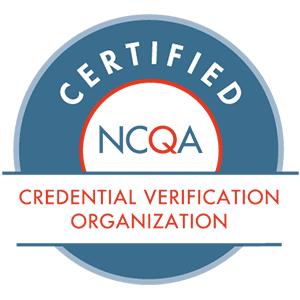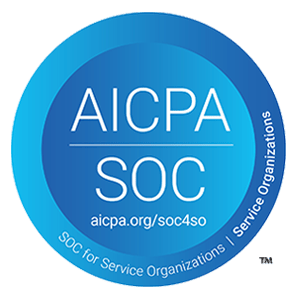Provider data is a fundamental driving force in the healthcare industry. When patients need care, they search through a provider directory to find someone in their healthcare network or plan that can provide them with the medical services they need. These directories allow patients to connect with healthcare providers and licensed practitioners to make appointments, find and exchange information, and pay for services.
The data included in provider directories is comprised of information about individual providers, groups of providers, or institutions, including what services they provide, the health plans and networks they participate in, and contact information and location details. This data is relied upon daily – not just by patients seeking care but also for credential monitoring purposes, coordinating benefits, and more.
Unfortunately, provider directories are often riddled with inaccuracies. The Centers for Medicare and Medicaid Services (CMS) conducted multiple reviews of Medicaid Advantage provider directories between February 2016 and July 2018. Their report from the third round of reviews found that of the 108 providers selected from 52 Medicare Advantage Organizations (MAO) directories, 48.7% of the provider directory locations listed contained at least one inaccuracy. These inaccuracies included incorrect locations, wrong phone numbers, or the directory stating that the provider was accepting new patients when they were not.
Correcting inaccuracies in provider directories is crucial. “Beneficiaries and their caregivers rely on provider directories to make informed decisions regarding their health care choices,” CMS stated in their report. “Inaccurate provider directories can create a barrier to care and raise questions regarding the adequacy and validity of the MAO’s network as a whole.”
Inaccurate provider directories aren’t just a problem for patients — it impacts all stakeholders
- Consumers: Inaccurate provider data can present a barrier to care for patients. It can also result in “surprise billing,” higher out-of-pocket costs, and delayed or incorrect reimbursements.
- Providers: Poor data quality can result in challenges in receiving payments for medical services. Responding to requests to update and verify provider directories also costs practices millions of dollars every year when time and resources could instead be spent providing clinical care.
- Payers: Health plans spend millions of dollars each year navigating online directory systems, requirements, and vendors. Inaccurate data can result in steep fines and increased regulatory scrutiny.
The most common problem in provider directories is listing providers at the wrong location, but CMS found a variety of other repeated inaccuracies within these Medicaid Advantage Organizations.
However, Medicaid Advantage plans aren’t alone in this problem. Commercial insurers also face inaccurate provider network data because many do not track and maintain the information for all of their providers. Instead, many commercial insurers simply rely on providers sending their data to insurance companies, spreading their information across multiple insurers’ directories. Providers must contact each individual directory to correct the information if their name, phone number, or patient-accepting status changes. It’s no wonder insurers end up spending as much as $2.1 billion annually to maintain overly-complicated, inaccurate databases.
CMS Takes Action Against Inaccurate Directories
In 2015, CMS notified insurers via a letter of an enforcement initiative that would impose hefty fines on insurers with inaccurate provider data in their directories. This requirement was put into place after many enrollees in the Affordable Care Act plan were unable to find providers due to inaccurate directories or were billed surprise out-of-network costs when their providers were mistakenly included in their plan’s directory.
Despite this letter, incorrect data continued to abound in provider directories, and patients were (and still are) slapped with “surprise bills” for out-of-network services they were told would be provided within their health plan or network. However, in the 2018 Provider Directory Review report, CMS suggested a central directory to maintain all provider data.
“A centralized repository for provider data is a key component missing from the accurate provider directory equation,” they stated. “This approach would make data collection and verification more efficient and less burdensome for MAOs and providers, and result in more accurate and timely data sharing.”
With this approach, insurers would no longer load their providers’ information and availability into disparate systems. Instead, they would sign into a centralized database to input their information. Public and private payers could then use this database to create their own directories. CMS is now seeking public feedback for its centralized database, released in a Request for Information (PDF) notice on its website.
The No Surprises Act Tackles Surprise Billing
One way to ensure patients don’t receive surprise bills is to ensure that in-network provider directories are accurate and up-to-date. In 2021, Congress passed the Consolidated Appropriations Act, containing the No Surprises Act (Sec. 116, page 1699). The No Surprises Act seeks to protect consumers from receiving unexpected, out-of-network bills for both emergency and non-emergency medical services.
With this act, payers are required to update and verify provider directories every 90 days at least and develop a protocol for removing providers that can’t be verified. They must also update their directory within two days of receiving an update about a provider and respond to patient requests regarding a provider’s network status within one business day.
As for providers, at a minimum, they must submit directory information to in-network plans or issuers when they begin or terminate a network agreement, when there are changes to their directory information, or at any other time the payer, provider, facility, or Secretary of Health and Human Services (HHS) deems necessary. The act also allows providers to require that the payer remove a provider from the directory upon termination of their contract. Any financial responsibilities for providing inaccurate network data to an enrollee will fall to the payer.
With the bill’s passing in 2021, healthcare facilities were expected to have business protocols in place by January 1, 2022, to ensure their directories were accurate and up-to-date. But while the goals of the No Surprises Act are commendable, there’s still work to be done. The No Surprises Act hasn’t completely solved the problem, and provider directories are still riddled with inaccuracies. So now what?
Next steps to ensure your provider directories are accurate
- Improve Provider Data Accuracy with Verified Credentials: Verified credentials are critical to provider data accuracy initiatives. Up-to-date and accurate provider credential data enables payers to accurately test for network adequacy, build preferred provider networks, and maintain accurate provider directories for compliance with the “No Surprises Act” of 2020.
- Maintain Network Integrity: Implement a compliance monitoring solution like ProviderTrust to deliver ongoing provider credential updates to ensure every provider remains compliant and meets network requirements at all times.
- Manage Provider Data: With a solution like ProviderTrust, credential status changes are delivered directly into existing PDMs or internal data warehouses via API, ensuring your payment integrity is maintained after every credential update.
How ProviderTrust Can Help
At ProviderTrust, we’re committed to upholding the highest standards of data accuracy, security, and patient safety. That’s why we stand by our proprietary Compliance Intelligence™ technology that ensures our data is smarter than the primary sources. We enrich primary source data and our client’s data records with unique identifiers to catch and verify exclusions no one else can, alerting you to compliance issues that might never be found across the healthcare ecosystem or any other monitoring process.







